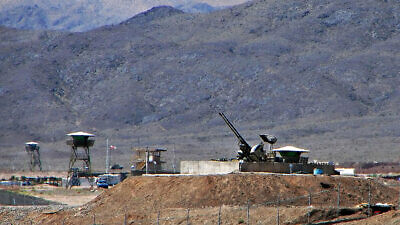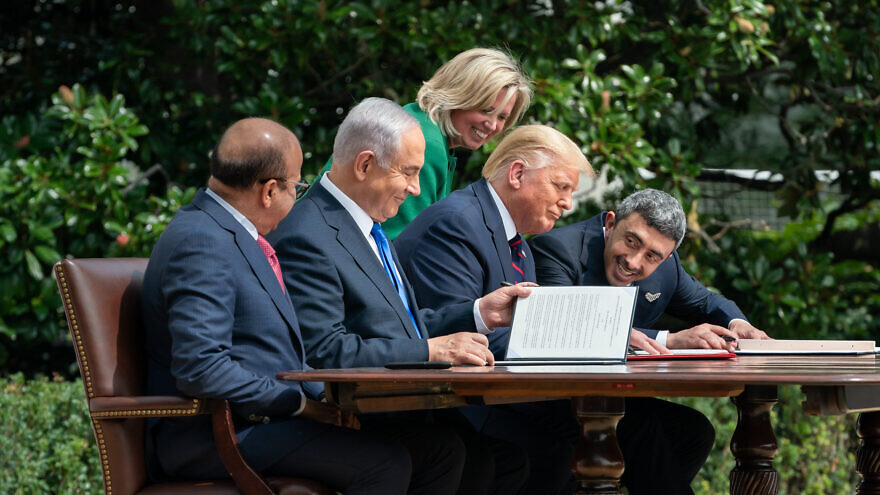As the Abraham Accords set in and the ties between moderate Arab states and Israel strengthen, more formalized relationships that tackle crucial regional issues—the Iranian threat, anti-terrorism efforts, and economic development, including desalinization and clean-water use—may emerge in the Middle East.
An important model for such cooperative development can be found further East—in Central Asia, where the United States and five regional countries (the Republic of Kazakhstan, the Kyrgyz Republic, the Republic of Tajikistan, Turkmenistan and the Republic of Uzbekistan) make up the C5+1 together with the United States, which provides an indispensable platform for dialogue with one of the superpowers.
Israel and some Arab states may be getting closer, with the possibility of regular regional meetings held in Arab capitals and in Jerusalem. Economic development, trade, security and other issues may be discussed regularly, perhaps along with American leadership as well.
A key policy discussed was the planned U.S. troop withdrawal from Afghanistan by Sept. 11 and an effort to have the Central Asian Countries play a greater role in maintaining regional stability.
The Central Asian states have disagreements that occasionally boil over into limited military conflict. For example, a border clash occurred in April between Kyrgyzstan and Tajikistan, killing more than 40 people. However, the presidents of the two countries prevented an escalation. They spoke, agreeing to a ceasefire and a meeting. After another flare-up of violence on June 4, talks between top security officials on both sides led to a nine-point agreement to end the violence.
Despite resentments between some Central Asian countries, there remains an underlying willingness to overcome obstacles and improve conditions on the ground, something that should happen more in the Middle East. The budding relationship between Israel and some Arab countries is driven significantly by the threat from radical Islamic groups and the Iranian regime.
‘A realistic cooperation bloc’
The collapse of the Soviet Union and the development of genuine political sovereignty posed the most challenging task for the peoples of Central Asia and their elites as they strived to build stable states, says Marat Uteubaev, professor at the Moscow-based Russian Academy of Natural Sciences.
The demise of the Soviet Union mirrors the collapse of the Ottoman Empire following World War I and the development of separate independent states in the Mideast.
Kazakhstan has had more success than other Central Asian countries in this transition to independence from the former Soviet Union. It is mainly due to the country’s first president, Nursultan Nazarbayev, who ruled the country from 1990 until 2019, says Uteubaev. For almost 30 years, Nazarbayev transformed the former Soviet region into a rapidly developing nation that became a leading facilitator for regional diplomatic cooperation.

Nazarbayev proposed CICA in 1992 to promote prosperity, peace and security in Asia; it was launched in 1999. It is a forum where both Iran and Israel are active members. Kazakhstan also hosted the early stages of Iran nuclear talks and Syrian peace talks known as the Astana Process in the capital Nur-Sultan (formerly Astana).
The Kazakh leader faced the revival of Russian great power status since 2000 and China’s rise a decade later. As a result, he formulated his country’s foreign policy as “multi-vector,” making it flexible and adaptable. This is necessary to navigate land-locked Kazakhstan’s diplomacy among various international powers: Europe, the United States, China and Russia.
Kazakhstan’s Central Asian peer Uzbekistan is now attempting a similar balancing act that seeks regional integration and investment promotion. Uzbekistan followed Kazakhstan’s lead in market reforms since President Shavkat Mirziyoyev took over from the authoritarian Islam Karimov in 2016.
The United Arab Emirates, Israel and other moderate Arab states will further develop a multi-vector approach, balancing relations between the traditional ally United States, assertive Russia, economic partner Europe and rising China.
Similar to Central Asian post-imperial cooperation, the success of Israel and the UAE may pave the way for the Abraham Accords members to become the engine that will bring the Middle East into a more prosperous era.
Note that the GDP of Kazakhstan was around $182 billion and Uzbekistan $58 billion in 2019. Compare this to Israel’s GDP of $395 billion and the UAE of $421 billion in 2019. This solid economic foundation could be a driving force behind growing Middle Eastern economic integration.
“The C5+1 and Central Asian Economic Union may also become a good model for Israel and friendly Arab countries” and their evolution “into a realistic cooperation bloc,” says Uteubaev.
‘Nuclear security guarantees’
Of course, Iran’s nuclear program looms over the Middle East.

One of Nazarbayev’s first steps to integrate his country into the international community was to close the Semipalatinsk nuclear test site in 1991, denuclearize and transfer all Soviet-era weapons to the Russian Federation by 1995. In addition, the United States facilitated the securing of leftover nuclear material from 1995 to 2001 as part of the Nunn-Lugar Cooperative Threat Reduction (CTR) Program. The decisive step 30 years ago has paid off.
The Nunn-Lugar program was created to secure and dismantle weapons of mass destruction and their infrastructure in the former Soviet states. Senators San Nunn and Richard Lugar were behind the initiative that resulted in the passage of the Soviet Threat Reduction Act in 1991. The CTR program was run out of the Department of Defense and aimed to deal with Russia, Ukraine, Belarus, and Kazakhstan after the collapse of the Soviet Union.
“Thanks to Nazarbayev, Kazakhstan is one of the first countries in the world to abandon nuclear weapons voluntarily,” says Uteubaev. The bold act provided nuclear security guarantees to Kazakhstan from United States, the United Kingdom, Russia, France and China, and opened the doors for massive foreign investment.
A similar event could occur if the Iranian regime falls, and the new government would decide to denuclearize with cooperation from the United States and other great powers. Kazakhstan offers a tempting example.


























